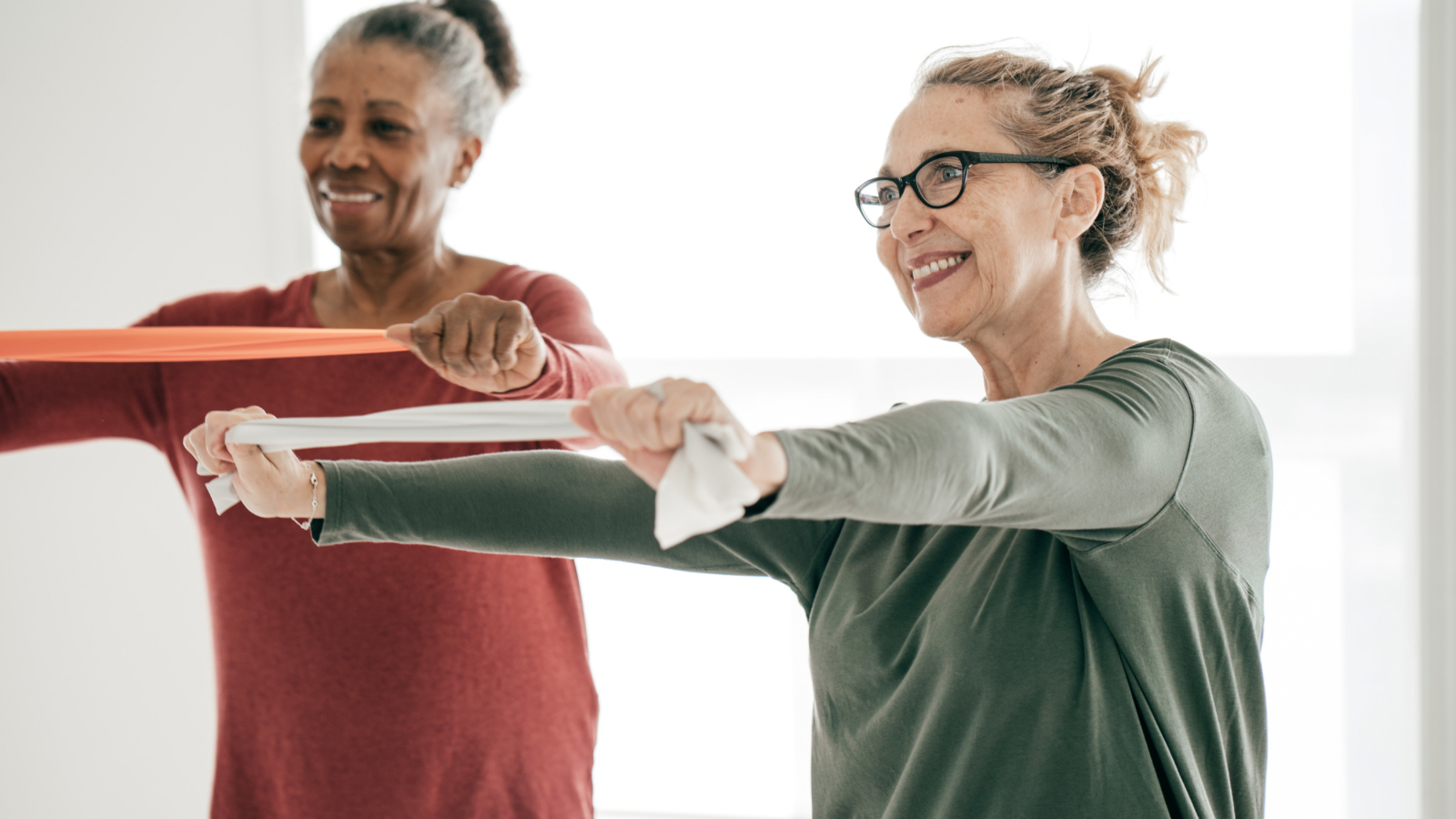Arthritis may seem relatively benign – everyone knows someone who has arthritis. But here are some numbers that help put the problem of arthritis into perspective:
- Arthritis is the leading cause of disability.1
- Arthritis affects 1 in 5 adults and 300,000 children1
- 1/3 of working-age people with arthritis have limitation in their ability to work1
- Arthritis costs $156 billion each year in medical expenses and lost wages1
- Nearly 1 million hospitalizations happen each year due to arthritis1
Arthritis is a serious condition that causes serious problems. The good news is that physical therapy is one of the most effective treatments for arthritis.
The Benefits of Physical Therapy for Managing Arthritis Symptoms
Two of the most common forms of arthritis are osteoarthritis (OA) and rheumatoid arthritis (RA). Osteoarthritis occurs because of wear and tear on the joints over time. Rheumatoid arthritis is an inflammatory, autoimmune disease that occurs because the immune system attacks the joint lining. Physical therapy can reduce joint pain, improve mobility, and help to prevent further damage to the joints. Using individualized exercises, physical therapists help people manage their condition and reduce discomfort. Physical therapists often combine advice on lifestyle modifications with exercise to maximize improvement. Let’s look at the types of exercise your physical therapist may include in your treatment plan to help manage arthritis symptoms.
RANGE OF MOTION EXERCISES
These exercises gently move affected joints through their entire range of motion.2 This can help reduce stiffness and improve mobility. Examples would include gentle stretching, tai chi, or gentle yoga.2,3
AEROBIC EXERCISE
Performing aerobic exercise creates repeated motion which helps move the synovial fluid in the joints. Moving synovial fluid increases blood flow and releases endorphins which reduce pain. Aerobic exercise also helps to control weight. Weight loss is proven to reduce the stress on your joints, which can reduce pain.3-5 Aerobic exercise for people with arthritis should be low-impact which includes walking, cycling, or swimming.2
STRENGTH TRAINING
Strength training is an important part of managing arthritis. It decreases pain and improves strength, and function. Stronger muscles around the affected joints provide better support and protection.2
AQUATIC EXERCISE
Exercising in a therapeutic pool can be a great way for people with arthritis to get started. The buoyancy of the water helps to relieve some of the body’s pressure on the joints.2 The water pressure also provides compression on the joints. This offers some stability and pain relief.2 The movement of your body through the water creates resistance for your muscles.2 This allows them to get stronger in a protective environment.
EDUCATION
Besides designing a custom exercise program, a physical therapist will educate people with arthritis on lifestyle modifications to help manage their symptoms. Some suggestions might include weight loss, getting enough sleep, eating a healthy diet, and managing stress. A physical therapist can also modify daily activities to help protect joints affected by arthritis. This can slow down or prevent the progression of symptoms.
Physical therapy is a safe and effective treatment for arthritis. Current clinical guidelines for treating arthritis include strong recommendations for exercise and other physical therapy treatments.3 If you’re one of the 53 million Americans with arthritis, contact us for a free consultation. Our team of physical therapists are all great providers that will help you reduce pain, manage your symptoms, and move better!
References:
- May Is National Arthritis Awareness Month – News. News. Published May 7, 2015. Accessed December 12, 2019. http://blog.arthritis.org/news/arthritis-awareness-month/
- Arthritis Foundation. Benefits of Exercise for Osteoarthritis. Arthritis.org. Published 2020. https://www.arthritis.org/health-wellness/healthy-living/physical-activity/getting-started/benefits-of-exercise-for-osteoarthritis
- Buelt A, Narducci DM. Osteoarthritis Management: Updated Guidelines from the American College of Rheumatology and Arthritis Foundation. American Family Physician. 2021;103(2):120-121. https://www.aafp.org/pubs/afp/issues/2021/0115/p120.html
- Dantas LO, Salvini T de F, McAlindon TE. Knee osteoarthritis: key treatments and implications for physical therapy. Brazilian Journal of Physical Therapy. 2020;25(2). doi:https://doi.org/10.1016/j.bjpt.2020.08.004
- Skou ST, Roos EM. Physical therapy for patients with knee and hip osteoarthritis: supervised, active treatment is current best practice [published correction appears in Clin Exp Rheumatol. 2020 Sep-Oct;38(5):1036]. Clin Exp Rheumatol. 2019;37 Suppl 120(5):112-117.

